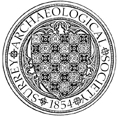Watching brief maintained by R Poulton of SCAU during the construction of two extensions at a property within the Scheduled area of Oatlands Palace revealed that the site had seen a considerable build-up in level (of over 1m) since the demolition of the palace in 1650. At the base of the build-up, and overlying the natural, was a layer representing debris from the palace demolition, although it is unclear what this implies with regard to the location of the site in relation to the palace.
